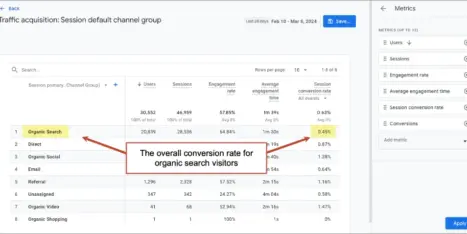We’ve all been there.
No matter what an experienced content marketer you are and what an interesting niche you work in, the moment will come when you ask:
What should I write???
Let’s say your in the business of selling donuts. What content do you generate to promote it? It stands to reason that you write about donuts. Then you write about how to cook them. The history of donuts comes next. (Old-timer copywriters would start from ancient Romans.) Then…
There comes a day when ideas go away, but donuts stay. Yet you need to write something about them. What next?

The content plan is an integral part of your marketing strategy. The problem is, you need topic ideas for all that. Needless to say, it’s challenging for most content marketers.
Your knee-jerk reaction might be, “I’ll google it!”
Okay, let’s check what the big dogs recommend:
Work with keywords
 |
“Keyword research has evolved from simply pleasing search engines to nailing user intent and satisfying your visitors. It’s a cornerstone of market research. Here are 2 tactics that you can use to research content ideas that have a demand in the market.” – Neil Patel’s 6 Writing Strategies to Add Variety to Your Blog |
- Find competitors
- Take their key phrases
- Combine headlines from keywords
- Find competitors’ content with the most traffic
- Choose the most popular topics from social networks
- Plan publications
The result would be something as follows:

What’s wrong here?
That’s right: it looks like a content plan for SEO copywriters who care about nothing but keywords.
Doesn’t seem perfect. Next!
Use tools
Use tools to help you come up with content ideas.
If you don’t have the luxury of brainstorming with others or you’d like another way to brainstorm content ideas, tons of tools are available to help you create content topics. – HubSpot, How to Build an Unbeatable Content Marketing Plan
Buzzsumo, Feedly, or What to Write help to discover popular content and track hot topics in your industry. Tools like Content Forest let you find top content from competitors, as well as analyze keywords.
Yes, keywords. Again. Been there, done that.
Think of tons of content types
 |
“So I asked myself: Why not pull together the world’s largest list of types of content to help you get the inspiration you need to fill out a super-diverse and detailed editorial calendar to kick butt at content marketing? Here ya go.” – Nathan Ellering on Convince&Convert’s 105 Types of Content to Fill Up Your Editorial Calendar |
They want to say the more content types you use, the better. Yes, it gives you ideas on how to present content; but it doesn’t give you any ideas on what this content could be about.
Doesn’t seem perfect for generating content ideas. Again.
“What shall I do then?” a reasonable question you ask.
You can use a matrix with its four measurements to get maximum content ideas from your niche, even if this niche isn’t as exciting as writing about donuts.
Attention: It has nothing in common with content matrixes available online.
They are numerous:
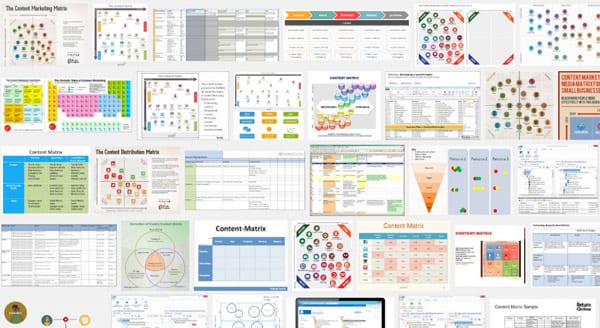
Some give you ideas on where to go next, but most of them have problems:
- They are nothing but empty editorial calendar templates.
- They classify content but don’t explain why you need all those classifications.
- None of them is a plan but content tool to help you generate ideas.
And none of them answers #1 question: WHAT TO WRITE?
For that, another kind of a matrix exists; its three measurements such as generalization, specification, and similarity with a starting point being your product will help to scale ideas.
#1: Generalization

Take your core topic and generalize it as much as possible.
How?
- Brainstorm alone. All ideas are good at this stage; so even if one person questions them, this can shut down your creativity.
- Open your notebook and write a list of 50 questions your audience would like to know about your product. Don’t stop and don’t correct anything. Just write questions, even if some seem unrelated or too general. When you have 50, read the list and choose the diamonds.
- Open your mind and think laterally. For example, Red Bull doesn’t write about drinks. Their content is about energy, pushing life to the limits, adrenaline, etc.
- Think of associations with your product.
My example is donuts by appointment, so that’s what the generalization measurement of my content matrix might look like:
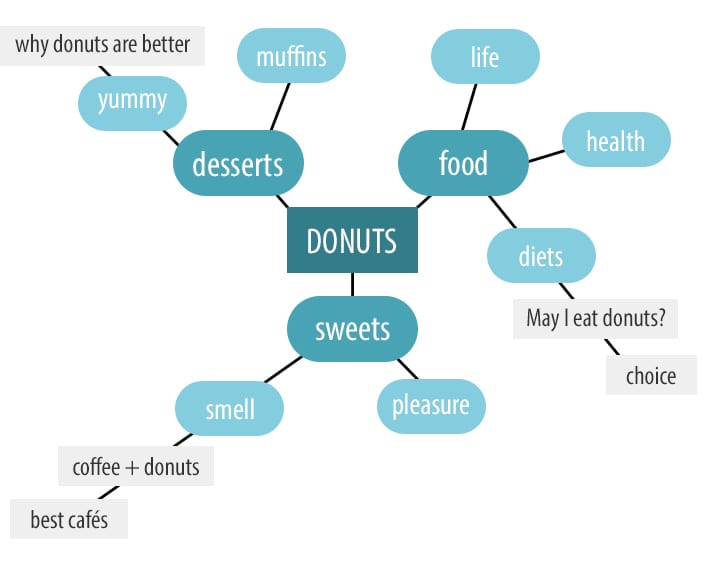
Remember about density: the more you generalize the niche, the fewer writings you should publish on those generalizations. Don’t distract your audience from the core topic too often.
#2: Specification
Opposite to generalization, this measurement allows you to write about tiniest specifications of your core product.

An idea is a novel combination of previously unconnected elements in a way that adds value. – Mark Johnstone
Which means you need to know two things:
- the elements of your product
- the connections between them
Which also means you can break your core topic into pieces and get tons of new ideas for your content plan.
How?
- Use the Internet as your focus group: ask the audience what elements of your product they care about, monitor comments, or search social media to find out how people feel about your product. You can check forums in your niche at LinkedIn, Quora, and Reddit. Google still works, too.
- Expand the number of elements. It will help to make more connections between them for more content ideas.
- Structure your content features by themes, and brainstorm content ideas for each element.
Speaking about donuts, the specification measurement of my matrix might look as follows:
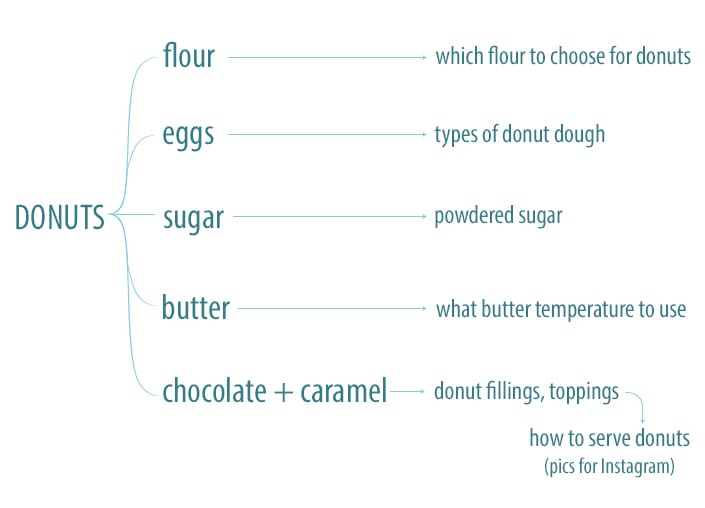
The number of such materials for your content is endless. In fact, you tell about your core product, don’t you?
#3 Similarity
This matrix measurement is about associations and making connections between your core product and other, seemingly unrelated, niches.
How to make that connection?
- Check what works for others, not necessarily your competitors, and draw a parallel between niches to “steal” ideas from others. For example, you can turn the post “20 ways to feed your cat” into “75 nontrivial ways to make your dog happier”.
- Take several separate ideas and put them together to get your own.
- Consider sub-categories that might meet the eye of your audience, too. In case with donuts, similarities might look like this:
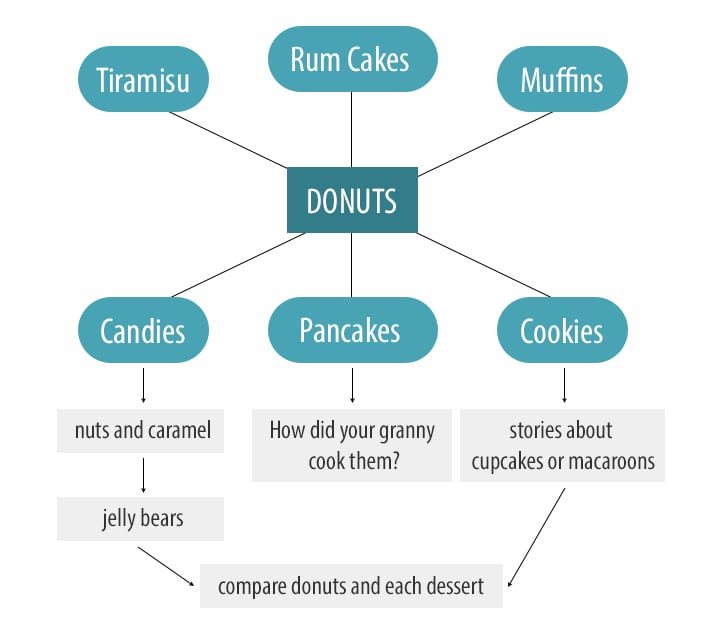
All they are actors in supporting roles for the core product, but you might want to cast them in a play for supplementing your storyline.
+1 Measurement to Consider: Time
And now draw all three measurements located on a coordinate grid with your core topic (product) in a datum point: generalization goes up, specifications go down, and similarities are along an axis.
Also, try adding the fourth measurement of a matrix for generating your content ideas.
Time.
Examples go for donuts by appointment, but I believe you’ve come to the point already:
- The history of Dunkin’ Donuts.
- Donuts in Iron Man 2.
- Futuristic donuts.
- Desserts in space.
- Vikings’ sweets. (Did they eat sweets at all?)
- Nuts and honey in ancient Greece.
- Madame de Pompadour and chocolate.
How soon will your content ideas come to the end with such an approach?
Never.
Certainly, far from every content creator writes about donuts or other lip-smacking and creative things. Here goes an example of content matrix for those writing about landscape design:
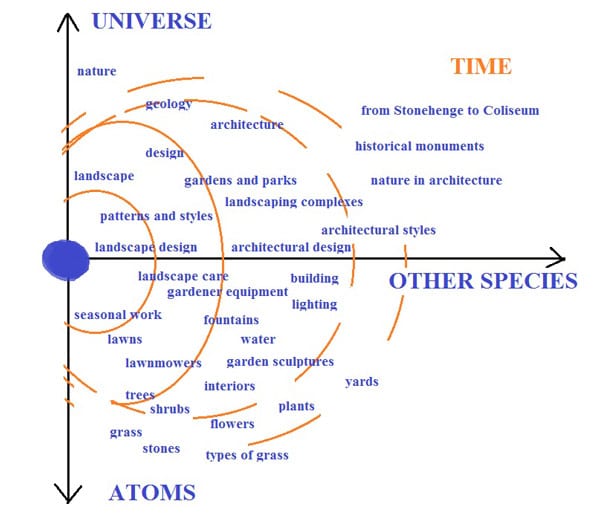
And this one goes to content marketers of furniture shops:

The best strategy to build content matrices is mind mapping.
MindMeister, Bubbl.us, or Text2MindMap might be your helpers in visualizing ideas and “seeing” the whole picture of your content plan. Just write your core topic in the center and draw lines with ideas related to each measurement of the matrix.
A Word to Remember
Balance.
Keep it by watching your audience’s interest in the topic: extending away from the core leads to losing communication with your brand while constant emphasizing on the core results in your brand’s domination and, therefore, annoyance.
And now, for the most interesting part:
Make your content matrix three-D!
Get a new angle on your niche to target different audiences. Turning to donuts, it might be:
- donuts and kids,
- donuts in other countries,
- donuts for those on a diet, etc.
Look at your niche from different perspectives but don’t forget: you sell donuts.
Did anyone here try such matrices for writing content about their products? Share your results and thoughts in the comments.


